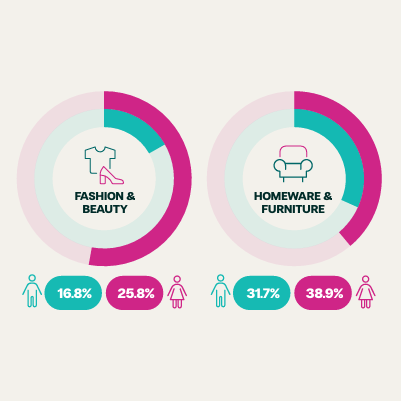How many BNPL solutions is too many? Single-solution vs. multi-solution

When choosing a retail finance or Buy Now, Pay Later (BNPL) solution for your checkout, it can be tempting to hedge your bets by going for more than one provider. That’s why it’s fairly common to find merchants who offer the chance to split the cost through more than one solution.
To prove this hypothesis, Divido conducted its own research. We analysed some of the UK’s largest retailers across different verticals and found that 76% had at least one checkout finance provider, with 27% offering multiple checkout finance solutions.
That means, in total, around one in three British retailers who provide the option to finance purchases offer more than one solution at the point of sale.
But is this necessarily the right course of action? Should merchants be partnering with multiple providers to offer customers greater choice, or should they be doubling-down on one provider? Let’s look at the pros and cons of offering multiple checkout finance solutions.
The positives of choosing multiple Buy Now, Pay Later providers
1. Customers carry over lender loyalty
As with any form of lending, trust matters. This is especially true in the realm of Buy Now, Pay Later, where as many as 90% of shoppers who choose this form of payment are repeat customers.
Thus, it follows that a customer who has had a positive experience with a checkout finance provider in the past (whether at your store or a different one) is more likely to choose that provider again the next time they want finance.
If your store offers a safe and familiar form of finance, the customer may be tempted to choose that provider again. Many retail finance providers also provide loyalty schemes of their own, adding an extra incentive for that customer to choose the solution they are familiar with.
The opposite is true as well. If a customer has been stung by one particular provider in the past, but still wants the option to finance their purchase, they may have their eyes peeled for an alternative provider. If your store only offers the solution the customer is not happy with, they may choose to abandon their purchase altogether.
2. More options means greater odds of acceptance
As a merchant, one of the key metrics that will matter to you when it comes to choosing a retail finance provider is the lender’s acceptance rate. After all, there’s nothing worse from the customer’s perspective than taking 10 minutes to fill in an application, only to be declined at the end. In the worst case scenario, it could put them off their purchase altogether.
At Divido, we work with multiple lenders to offer a variety of financing options at the checkout. Having partnered with multiple different businesses, we know that every lender has a different appetite for risk. Some lenders are very open to accepting customers, while others are far stricter. In some instances, we have seen acceptance rates lower than 50%.
Therefore, the ability to connect your customers to multiple possible lenders could help to ensure that their odds of being accepted for finance are higher. Where one lender may decline the application, another may have a stronger appetite.
3. Multiple lenders means greater reach
Buy Now, Pay Later and checkout finance has already proven its worth in several markets worldwide. For instance, the UK has around 17 million users (22% of the population), with almost 70% of British retailers saying that BNPL and checkout finance has helped to increase sales and conversions. Markets such as Sweden, Australia and Germany also see very high rates of market penetration.
However, that leaves a lot of room for Buy Now, Pay Later to grow. And, according to the latest research, grow it most certainly will. The global checkout finance sector is expected to reach $1 trillion globally by 2030, up from $112 billion in 2022, as BNPL expands into new territories.
Retailers with an international scope should be taking steps to get ahead of this curve by working with lenders who extend their offering to other markets. As well as working with a local lender, consider partnering with lenders who can help you to offer checkout finance overseas – whether that’s one lender with a global reach, or individual lenders with local market expertise.
Remember, different markets require different expertise. You will need a lender who can speak the local language, navigate around local regulation and who can work in the local currency. A good option in this regard is to choose a platform like Divido that offers access to multiple global lenders from one platform.
The negatives of choosing multiple Buy Now, Pay Later providers
1. They can distract from your own offering
Through our own research, we found that around 14% of big retailers in the UK offer retail finance under their own name. This is a particularly common option when it comes to providing finance for big purchases such as furniture and home appliances, but is also becoming popular among clothing and homeware retailers.
However, many of these retailers were also offering second, third and – in one case – fourth checkout finance options alongside their own. While some of these instances are justified (such as when a retailer offers mature finance for large-ticket items and BNPL for small-ticket items), they also run the risk of losing customers to one of their partners’ solutions.
This means the retailer would miss the opportunity to build trust at the checkout by continuing the relationship with the customer while they take out finance, and would mean they have less control over the relationship once the customer has completed their purchase too.
If your business has gone to the trouble of establishing a checkout finance solution under its own brand name, it may be time to ask the question: do we still benefit from having multiple partners?
2. More options means more to manage
Checkout finance is changing day-by-day. With regulation fast approaching, merchants are having to adapt to the new landscape of lending. Among other things, retailers will soon be required to provide clear and factual information alongside their finance options, and will need to partner with lenders who are regulation-compliant (for instance, by reporting loan details to credit reference agencies).
Meanwhile, retailers must remain vigilant. At Divido, we recommend that merchants should produce content on their website and in-store detailing their relationships with their finance providers, with information about what the consumer should do in the event of a grievance. For example, customers should be told what to do in the event they need a refund.
The more providers you partner with, the more vigilant you must become. Each provider brings a new degree of risk – remembering that, should the relationship between your customer and the lender sour, the reputation damage may fall back on you. And, with each new provider, there is a risk you could end up fighting fires on several fronts.
If your business has the capacity to monitor and respond to transactions occurring across numerous providers, you are better placed to offer multiple options. However, if your resources are already a bit stretched, you must ask yourself: is it worth the risk?
3. Consumers are facing ‘solution fatigue’
Even though there are already a multitude of providers out there, barely a month passes without the news that a new finance provider is looking to enter the Buy Now, Pay Later market. From the consumer’s perspective, many of these options are starting to look the same (indeed, many of them are), leading to confusion at points-of-sale about which provider to choose.
This may be contributing to the phenomenon some industry commentators are calling ‘solution fatigue’ in the BNPL space. What would otherwise be a straightforward and intuitive process (shop for items, choose finance, check out) suddenly involves an unexpected level of consideration, with the due diligence falling on the customer.
Multiple solutions may be increasing the number of conversions going through your site today, but there’s no telling when your customers may also experience this fatigue. If they do, it may be time to ask whether it’s time to jettison some of your partners and focus on a single checkout finance journey.
So which is better: single-solution or multi-solution?
As you’ve seen, there is a strong argument for choosing both a single solution and multiple solutions when it comes to offering checkout finance.
With multiple lenders, you can benefit from a greater probability that your customers will find an option they are familiar with, a higher rate of acceptances (especially in instances where the customer may be declined by one lender), and the opportunity to lend in multiple markets.
Whereas with a single solution, you can concentrate on driving customers down a single channel, making the experience seem less confusing and increasing customer loyalty (especially if you provide a whitelabel solution), all while making the work easier for yourself – which is especially important given regulation is right around the corner.
All we can really say for sure is that – by increasing average transaction value, reducing rates of basket abandonment and giving your customers more choice at the checkout – any number of solutions is better than no solution at all.
So, if you haven’t already implemented checkout finance into your sales stream, why not speak to Divido today to learn more about our whitelabel platform, which connects your customers to multiple lenders.
Don’t clutter your checkout. Choose a solution that literally has your name on it.
Speak to Divido to find out more about our whitelabel checkout finance platform.
Tell me more about white-labelling my BNPL programme
Is this the perfect time to implement retail finance?

With sales plummeting, retail finance offers merchants an insatiable chance to drive more sales – while giving customers more options, too. Our new whitepaper shows you how to start lending for good today.
Keen to know more?








